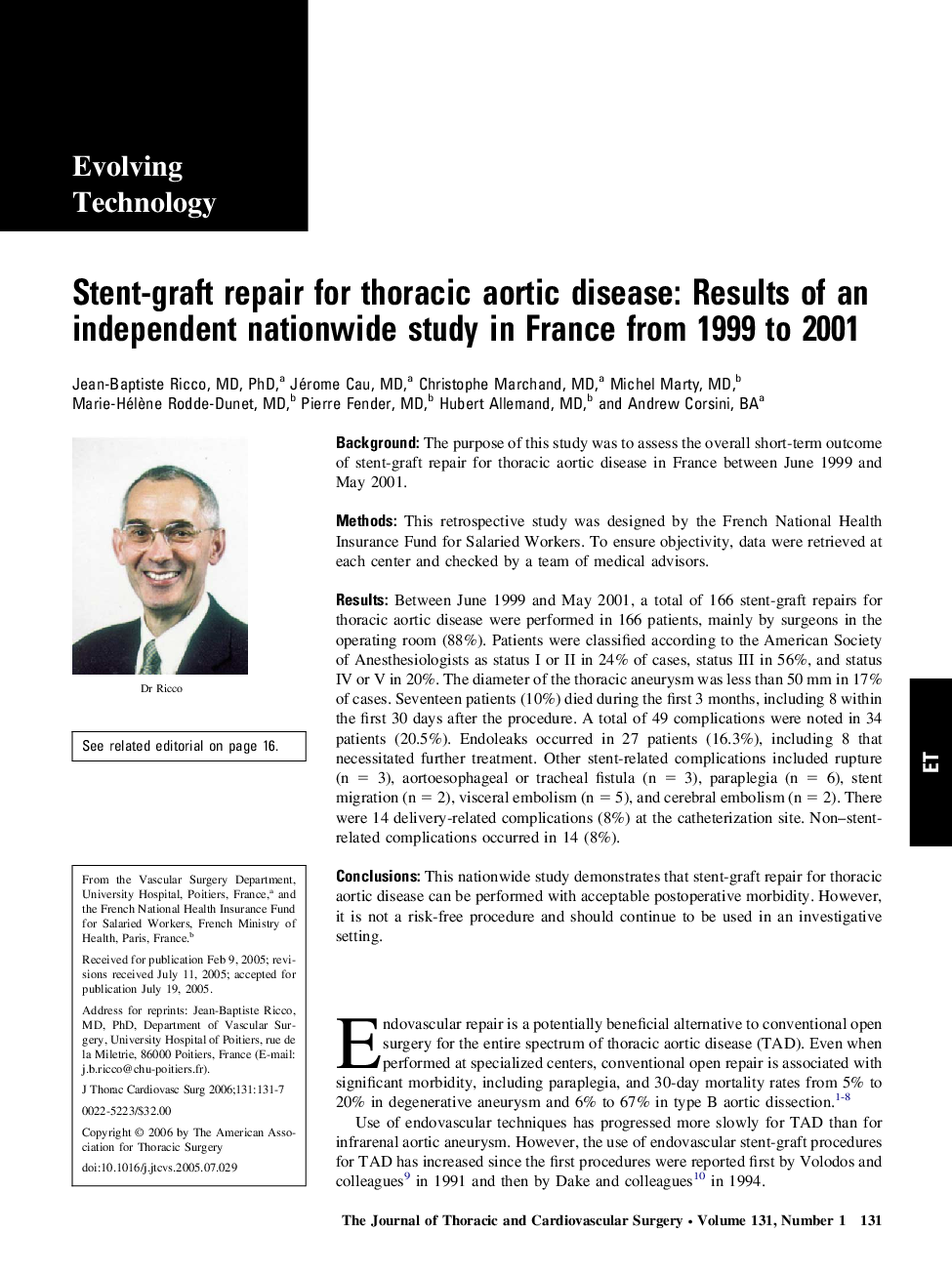| Article ID | Journal | Published Year | Pages | File Type |
|---|---|---|---|---|
| 2987216 | The Journal of Thoracic and Cardiovascular Surgery | 2006 | 7 Pages |
BackgroundThe purpose of this study was to assess the overall short-term outcome of stent-graft repair for thoracic aortic disease in France between June 1999 and May 2001.MethodsThis retrospective study was designed by the French National Health Insurance Fund for Salaried Workers. To ensure objectivity, data were retrieved at each center and checked by a team of medical advisors.ResultsBetween June 1999 and May 2001, a total of 166 stent-graft repairs for thoracic aortic disease were performed in 166 patients, mainly by surgeons in the operating room (88%). Patients were classified according to the American Society of Anesthesiologists as status I or II in 24% of cases, status III in 56%, and status IV or V in 20%. The diameter of the thoracic aneurysm was less than 50 mm in 17% of cases. Seventeen patients (10%) died during the first 3 months, including 8 within the first 30 days after the procedure. A total of 49 complications were noted in 34 patients (20.5%). Endoleaks occurred in 27 patients (16.3%), including 8 that necessitated further treatment. Other stent-related complications included rupture (n = 3), aortoesophageal or tracheal fistula (n = 3), paraplegia (n = 6), stent migration (n = 2), visceral embolism (n = 5), and cerebral embolism (n = 2). There were 14 delivery-related complications (8%) at the catheterization site. Non–stent-related complications occurred in 14 (8%).ConclusionsThis nationwide study demonstrates that stent-graft repair for thoracic aortic disease can be performed with acceptable postoperative morbidity. However, it is not a risk-free procedure and should continue to be used in an investigative setting.
